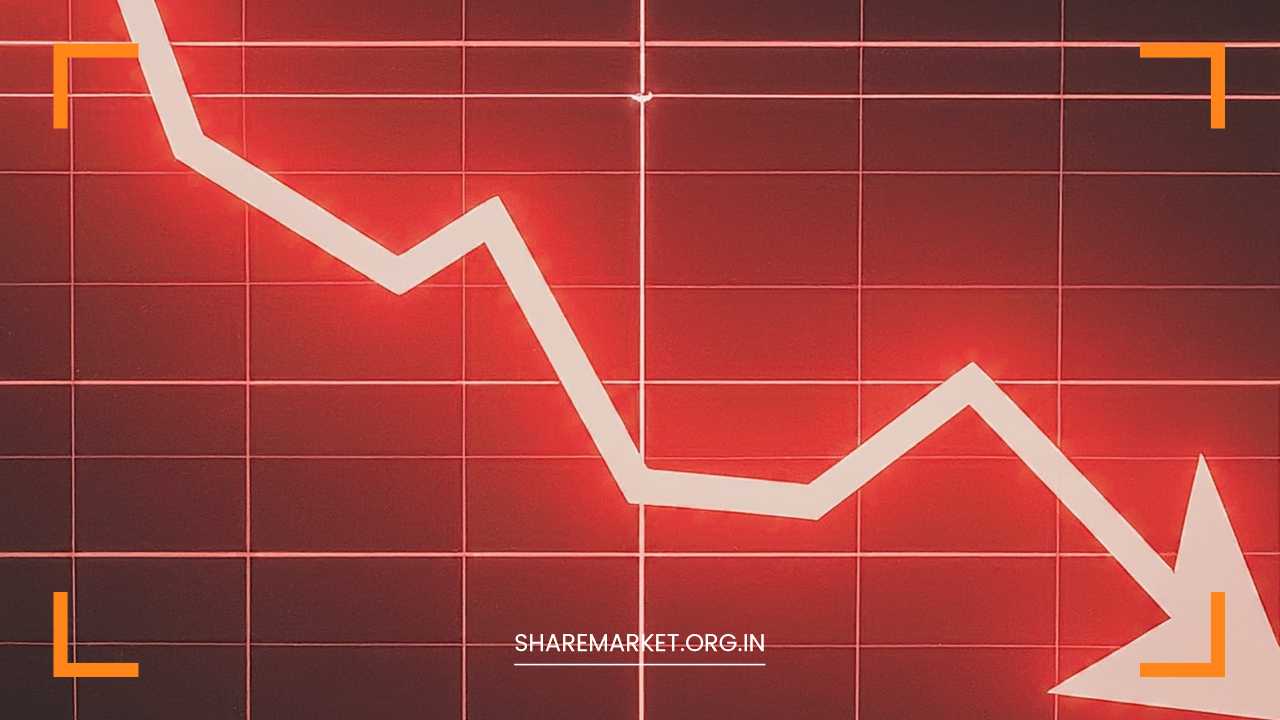Stock Market Crash: 5 Reasons Behind the Plunge

Stock Market Crash
Bloodbath on Dalal Street: Decoding the Factors Behind the Recent Market Plunge
The Indian stock market witnessed a brutal sell-off on May 9th, leaving investors reeling. Both the benchmark indices, Sensex and Nifty, plunged over 1.5%, with Sensex shedding more than 1,000 points and Nifty breaching the crucial support level of 22,000.
This marked the fifth consecutive day of losses, raising concerns about the market’s health and prompting introspection into the underlying causes.
This news article delves deeper into the five major factors that triggered the recent market meltdown:
1. Election Jitters: A Cloud of Uncertainty Looms
The upcoming Lok Sabha elections are casting a long shadow over the stock market. After initial projections of a resounding victory for the BJP-NDA alliance, the low voter turnout in the early phases has injected a dose of uncertainty. Analysts point out that a clear mandate is crucial for market stability.
The absence of a strong majority could lead to political instability and delay crucial economic reforms, hindering investor confidence.
Furthermore, political rhetoric from various parties further amplifies market anxieties. Investors are sensitive to any pronouncements that could potentially impact the economic landscape or business environment.
Expert Quote:
“The uncertainty surrounding the election outcome is significantly impacting market sentiment. The volatility index, India VIX, has reached a 52-week high of 19, reflecting heightened investor anxiety,” says Arvinder Singh Nanda, Senior Vice-President, Master Capital Services.
2. Disappointing Earnings: A Reality Check for Investors
The much-awaited Q4 results of companies have failed to excite the market. Most corporations have either reported earnings below expectations or merely met analyst forecasts. This lack of positive surprises has dampened investor enthusiasm, leading to a selling spree.
The underwhelming performance across various sectors, particularly those sensitive to economic fluctuations, has further exacerbated the situation.
This reinforces concerns about the overall health of the Indian corporate landscape and its ability to generate sustainable growth.
3. Global Headwinds: Echoes of the US Fed’s Hawkish Stance
The recent hawkish pronouncements by some US Federal Reserve officials have sent shockwaves through global markets, including India.
Investors are worried about the potential for aggressive interest rate hikes in the United States. Higher interest rates can lead to a withdrawal of foreign capital from emerging markets like India in search of better returns.
Additionally, tighter monetary policy in the US could potentially slow down global economic growth, impacting Indian exports and overall market sentiment.
4. Rising Oil Prices: Fueling Market Anxieties
The relentless surge in crude oil prices continues to exert pressure on the Indian stock market. Brent crude oil prices hovered around $84 per barrel on May 9th, while WTI prices remained above $79. This upward trend in oil prices has a two-fold impact on the market.
Firstly, it increases the cost of production for various industries, leading to potential erosion of profit margins for companies.
Secondly, it fuels inflationary pressures in the economy, which can impact consumer spending and overall economic activity. This combination of factors discourages investment and contributes to market volatility.
5. Derivative Expiry: Adding Fuel to the Fire
The weekly expiry of Nifty option contracts on May 9th further exacerbated the market sell-off. As the expiry approached, traders indulged in a flurry of activity to adjust their derivative positions. This heightened trading volume led to increased volatility and price swings, contributing to the overall market decline.
Beyond the Headlines: A Look at the Long-Term
While the recent market meltdown is unsettling, it’s crucial to maintain perspective. Market corrections are natural occurrences in the investment cycle. They provide opportunities for investors to reassess their portfolios and make strategic adjustments.
A focus on long-term investment strategies and diversification across asset classes can help weather short-term market fluctuations.
The Road Ahead: Navigating Market Volatility
The future trajectory of the Indian stock market remains uncertain. The outcome of the elections, global economic cues, and the performance of domestic companies will all play a crucial role in determining market direction.
However, several positive factors offer cause for optimism. The Indian economy is on an upward trajectory, with strong GDP growth projections. Additionally, the government’s ongoing reforms and infrastructure initiatives have the potential to propel economic activity further.
For investors, the key lies in staying informed, conducting thorough research, and remaining disciplined in their investment approach. Consulting with a qualified financial advisor can be invaluable in navigating these turbulent market conditions.
Final Remarks
The recent market plunge serves as a stark reminder of the inherent volatility of financial markets. While short-term fluctuations can be unsettling, a focus on long-term fundamentals and a well-diversified portfolio can help investors weather market storms and achieve their financial goals.


















Hope the market will recover soon!